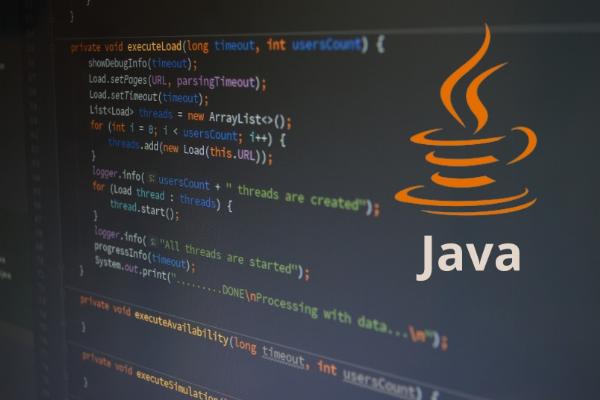Java Fundamentals: Building a Strong Programming Foundation

Strong 8k brings an ultra-HD IPTV experience to your living room and your pocket.
Java, one of the most widely used programming languages, continues to be a preferred choice for developers worldwide. With its platform independence, object-oriented nature, and robust ecosystem, Java offers both beginners and experienced programmers a reliable language to build a variety of applications. Whether you're looking to build web applications, mobile apps, or enterprise-level software, learning Java fundamentals will provide a solid foundation for a successful programming career.
In this article, we will explore the core concepts that form the foundation of Java programming. These include basic syntax, object-oriented programming (OOP) principles, data types, and essential tools for Java development. By understanding these principles, you will be well-equipped to tackle more complex programming challenges.
1. Introduction to Java and Its Applications
Java was developed by Sun Microsystems (now owned by Oracle) in the mid-1990s and has since grown into a versatile, secure, and efficient language. Java’s "write once, run anywhere" philosophy means that applications written in Java can run on any device or platform with a Java Virtual Machine (JVM). This has made Java a staple in industries ranging from web development to banking and healthcare.
Key Features of Java:
Platform Independence: Java applications can run on any operating system without modification.
Object-Oriented: Java emphasizes the use of objects, which simplifies complex programming tasks.
Robust and Secure: Java provides runtime error checking and strong security features, making it suitable for enterprise-level applications.
Multithreading Support: Java enables concurrent execution of tasks, which is essential for building efficient applications.
By understanding the underlying principles and features of Java, developers can build scalable, secure, and efficient applications for a variety of domains.
2. Setting Up the Java Development Environment
Before diving into Java programming, it’s essential to set up a development environment. This involves installing the Java Development Kit (JDK) and choosing an Integrated Development Environment (IDE) like Eclipse, IntelliJ IDEA, or NetBeans.
Steps to Set Up the Environment:
Install the JDK: The JDK provides the necessary tools for developing and running Java applications. You can download the latest version from Oracle’s official website.
Choose an IDE: IDEs make coding more manageable by providing features like code completion, debugging tools, and project management. Eclipse and IntelliJ IDEA are widely used IDEs for Java development.
Set up the IDE: Once the IDE is installed, you need to configure it to recognize the JDK, create your first project, and start writing Java code.
By setting up an effective development environment, you streamline your workflow and ensure that you have the tools necessary for efficient coding.
3. Understanding Java Syntax and Structure
At the core of Java programming lies its basic syntax, which is essential to understand before diving into more advanced topics. Java's syntax is similar to other languages like C and C++, making it familiar to developers transitioning from other programming languages.
Key Components of Java Syntax:
Class Structure: Java is class-based, meaning that every piece of code belongs to a class. A class is a blueprint that defines the structure and behavior of objects.
Main Method: The main() method is the entry point of any Java application. This method is where the program begins execution.
Statements and Expressions: Java code is executed line by line, and each line is typically a statement, ending with a semicolon.
Comments: Java supports single-line (//) and multi-line (/* */) comments for better code documentation.
4. Java Data Types and Variables
Java provides a rich set of data types and variables to store, manipulate, and retrieve data. It’s crucial to grasp the concept of variables, as they are the foundation for handling data within a program.
Primitive Data Types: Java has eight primitive data types, each designed to handle specific kinds of data:
int: For integer values.
double: For decimal numbers.
char: For single characters.
boolean: For true/false values.
byte, short, long, float: Other numeric types with different ranges and precision.
Reference Data Types: In addition to primitive types, Java also supports reference data types, which include arrays, classes, and interfaces.
Variables: Variables in Java are containers for storing data. Each variable is assigned a data type, and its value can change during the program’s execution.
By understanding the types of data you can work with and how to store them efficiently in variables, you'll be able to manipulate data effectively within your Java programs.
5. Object-Oriented Programming (OOP) Concepts in Java
Java’s OOP principles are the backbone of the language. Mastering these concepts allows you to write modular, reusable, and scalable code.
Four Pillars of OOP in Java:
Encapsulation: Encapsulation is the bundling of data (variables) and methods (functions) that operate on the data into a single unit, called an object. Java uses access modifiers (private, public, protected) to control how data is accessed and modified.
Inheritance: Inheritance allows one class to inherit the properties and methods of another. This promotes code reuse and can simplify program structure. A subclass inherits from a superclass and can add its own properties and methods.
Polymorphism: Polymorphism means "many forms," and in Java, it allows objects of different classes to be treated as objects of a common superclass. Polymorphism is achieved through method overriding and method overloading.
Abstraction: Abstraction involves hiding complex implementation details and exposing only the essential features of an object. In Java, abstraction is implemented using abstract classes and interfaces.
Real-World Application of OOP: By using these OOP principles, developers can create robust software that is easier to maintain, understand, and extend. Object-oriented programming is particularly beneficial in large projects, where code organization and reusability are critical.
6. Java Control Flow Statements
Control flow statements are crucial for directing the execution of code based on certain conditions. These include loops, conditional statements, and switch cases, all of which allow for dynamic decision-making within your program.
Types of Control Flow Statements in Java:
Conditional Statements: The if-else statement allows you to execute code blocks based on a condition.
Switch Case: The switch statement enables branching execution paths based on the value of an expression.
Loops: Loops (for, while, do-while) let you repeatedly execute a block of code until a condition is met.
Mastering control flow allows you to create interactive and dynamic programs that can handle different scenarios and inputs.
7. Java Exception Handling
No matter how well-written a program is, errors and exceptions are inevitable. Java provides a robust mechanism to handle runtime errors and ensure that the program can gracefully recover from them.
Key Concepts of Exception Handling:
Try-Catch Blocks: The try block contains code that might throw an exception, while the catch block contains the code to handle the exception.
Finally Block: The finally block always executes after the try-catch, regardless of whether an exception occurred, making it useful for cleanup code.
Throwing Exceptions: Java allows you to manually throw exceptions using the throw keyword.
Proper exception handling ensures that your program can recover from errors without crashing, thereby improving the user experience and reliability of the application.
8. Understanding Java Libraries and Frameworks
Java’s ecosystem extends far beyond the core language, with a vast array of libraries and frameworks that simplify development tasks. These tools can help you accelerate your development process by providing pre-built functionality.
Popular Java Libraries:
Apache Commons: A set of reusable Java components.
Google Guava: Provides additional utilities for collections, caching, and more.
Popular Java Frameworks:
Spring: A powerful framework for building enterprise-level applications.
Hibernate: A framework for object-relational mapping (ORM), which simplifies database operations.
Learning how to use these libraries and frameworks can significantly enhance your productivity and the quality of your applications.
9. Java Tools for Effective Development
To become proficient in Java development, it's essential to leverage various tools that streamline coding, debugging, and project management.
Key Java Tools:
Maven/Gradle: Build tools that manage dependencies and automate project builds.
Jenkins: A continuous integration tool for automating testing and deployment.
JUnit: A testing framework that simplifies unit testing for Java applications.
By incorporating these tools into your workflow, you can ensure efficient, high-quality development practices that lead to better software.
10. Conclusion
Mastering Java fundamentals is crucial for anyone looking to build a solid foundation in programming. From understanding basic syntax and OOP principles to utilizing libraries, frameworks, and tools, Java offers a versatile and powerful platform for developers.
As you progress in your Java learning journey, focus on building a deep understanding of these core concepts while continually practicing through real-world projects. With the right resources and a dedication to continuous learning, Java can open the doors to numerous career opportunities and help you become a proficient, sought-after developer in today’s tech landscape.
For those looking to get ahead, the Best Java Training in Noida, Faridabad, Nashik and your nearest cities in India provides comprehensive guidance, ensuring you have the skills and knowledge needed to excel in your career.
Note: IndiBlogHub features both user-submitted and editorial content. We do not verify third-party contributions. Read our Disclaimer and Privacy Policyfor details.


